Palau de la Musica Catalana in Barcelona
I think I have commented this before.
I do not deal well with crowds.
Well, not necessarily crowds. But, when people start to push you, step over you and, even, grab certain parts of the body that are off limits, then, that is when I start to fall apart.
Knowing that fact about me, you could imagine how I felt in an over-the-top crowded place like Las Ramblas.
For those of you who are not familiar with this street in Barcelona (it is actually 5 streets, hence the plural in the name), think about the most crowded event you have attended. Now, think about the people in attendance moving all day long through the same space.
That is what you have in Las Ramblas, a non-ceasing sea of humanity moving from the center of town to the coastal esplanade (and vice versa).
I found a solution, of course. I ditched Las Ramblas and started moving along Via Laetiana. That felt way better.
And that is how, one particular late afternoon when walking to the hotel, my husband spotted an unusual building.
“Ahh, look how pretty that building is,” he said excited.
Before I ended turning my head, I knew he was referring to the Palau de la Musica Catalana. I had it on my list of places to check out. With all the sights in Barcelona, it started to move to the bottom of my list. “Let’s check it out,” I said while making an attempt to cross the street.
While my husband was taking pictures, I noticed people at the ticket booth. I stand in line and asked about tours. “The last tour of the day starts in 10 minutes. It is in Spanish. Is that ok?” asked the attendant. “That is perfect,” I replied.
And, oh boy! I am so glad this all worked out because I get goose bumps when I think about this place. I get a smile on my face when I remember its shapes and colors. It showed me that details matter. Details are the things that are going to make you stand out from the pack.
A lot of people are familiar with the works of Antoni Gaudi. They know the Modernism movement because of him and they go to Barcelona to observe his mind bending works of art.
The Palau de la Musica Catalana is the work of an architect named Lluis Domenech i Montaner, a Modernist architect known by dotting his buildings with an exuberant ornamentation full of Spanish-Arabic accents.
The Palau and another of his buildings, the Hospital de Sant Paul, have been declared UNESCO World Heritage Sites.
So, Gaudi may be the most famous architect associated with Modernism but there are other architects who created amazing structures within the movement lines. And those my friends, should not be taken out of the list of must see in Barcelona!
I have not explicitly written it but at this moment you may have assumed the Palau is a concert hall. It was built for the Orfeo Catala, a choral society founded in 1891 that was a leading force in the Catalan cultural movement that came to be known as the Renaixença (Catalan Rebirth)
Vestibule
The ceiling of the vestibule is decorated with glazed ceramic moldings that are arranged in the shape of stars. From the vestibule, on the left and right, grand marble staircases ascend from between crowned lamps on columns to bring visitors to the second floor,
Lluís Millet Hall
The salon located on the second floor of the Palau that is named after one of the founders of the Orfeó Català. The hall is a popular gathering place for concert-goers and also serves as a teaching area for visitors touring the building.
The highlight of this area is the balcony adorned with two rows of columns totally covered in mosaics. You are allowed to walk into the balcony during the tour.
Concert Hall
This is the highlight of a visit to the Palau.
The walls on two sides consist primarily of stained-glass panes set in magnificent arches, and overhead is an enormous skylight of stained glass whose centerpiece is an inverted dome in shades of gold surrounded by blue that suggests the sun and the sky.
The entire hall is one of the most exuberant spaces I have seen. The back of the stage is decorated by 18 muses (the upper body of the muses are sculptures). The stage is framed by a Pegasus, a symbol of imagination, Beethoven and figures representing Wagner’s opera The Valkyries.
The ceilings, walls and lights depict elements of nature. The architect wanted concert goes to feel in the outdoors.
By day, the space is illuminated by natural light.
The space has been described as one of the most beautiful concert halls in the world. The tour guide said it is unique in the world in terms of its acoustics. The sound is the same whether the place is empty or full (they have designed the seats in certain way so this is possible).
The Exterior
The exterior is richly decorated too. Domenech had the difficult task of designing the building in a narrow space surrounded by other historical buildings. It was not an easy feat.
However, he was able to achieve a façade which incorporated several architectural elements, exposed brick, iron, mosaics and stained glass. The outside is full of sculptures (Beethoven, Bach, Wagner and a magnificent corner sculpture representing Catalan song).
There is not space in here to describe all the brilliant features of the Palau. It is something that has to be seen to be fully appreciated. The emotion that one feels when seated at the hall is indescribable.
It is my hope that this post gives you a desire to explore the “other” Modernist masterpieces of Barcelona.
Details
- Visit the Palau’s official site for tour or concert tickets: http://www.palaumusica.cat/en
Have you been to the Palau de la Musica Catalana?
Pin it for later?
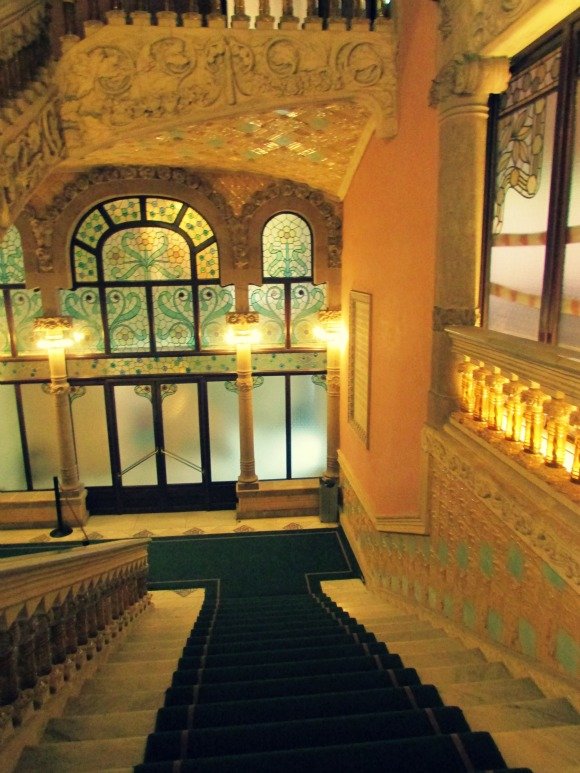
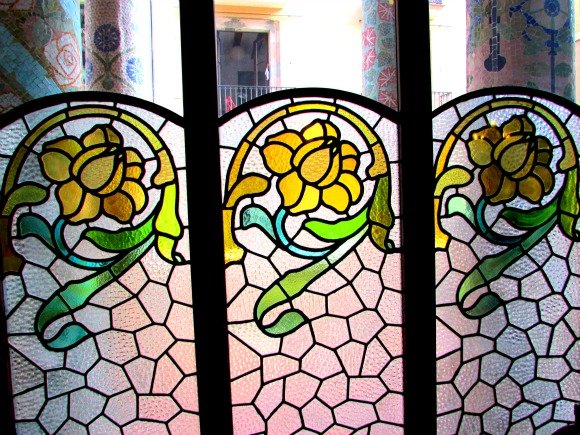


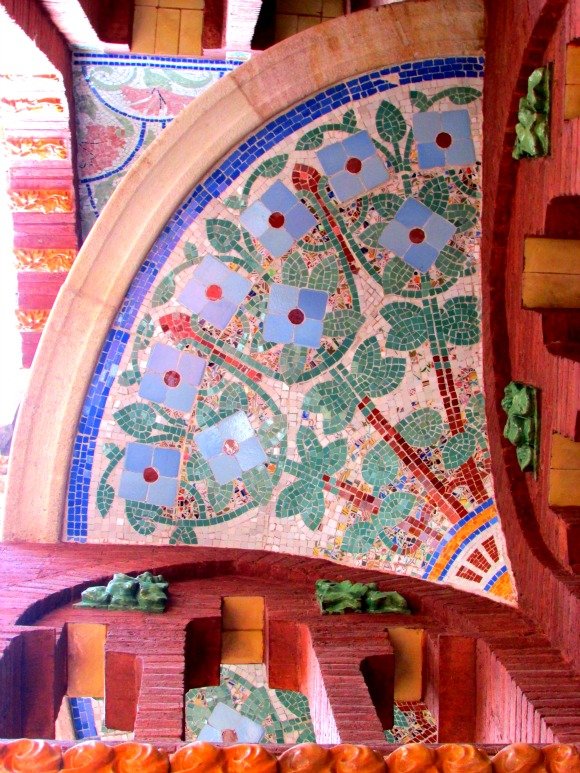



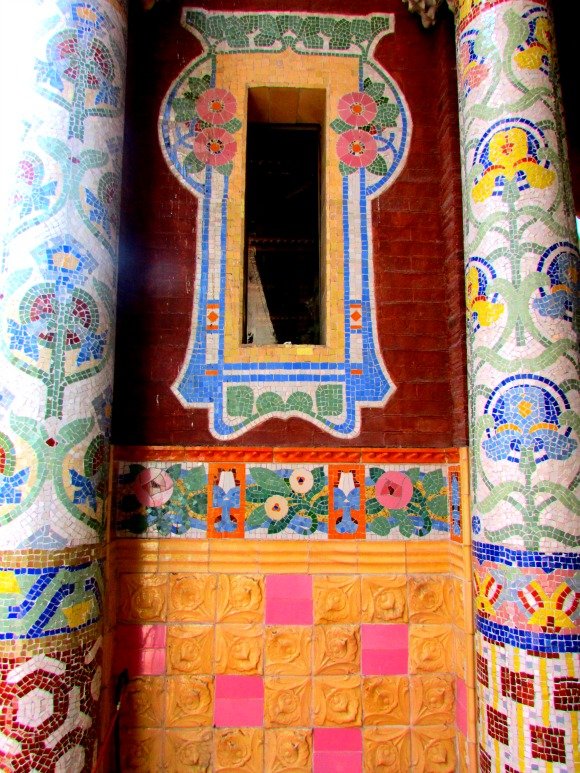
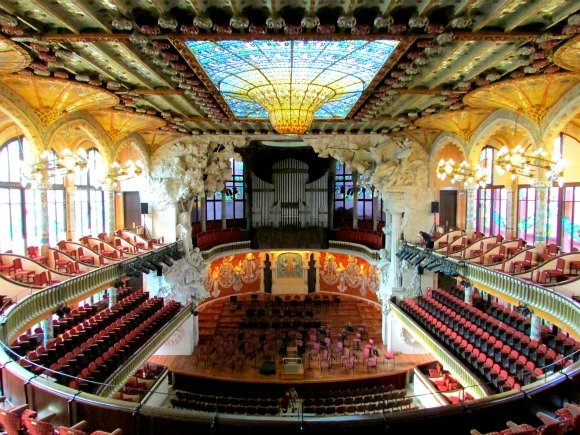

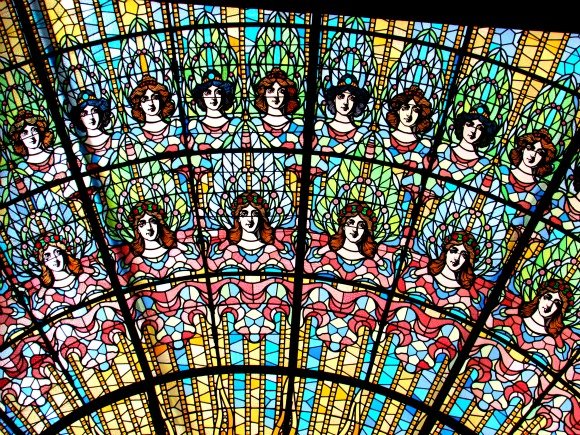
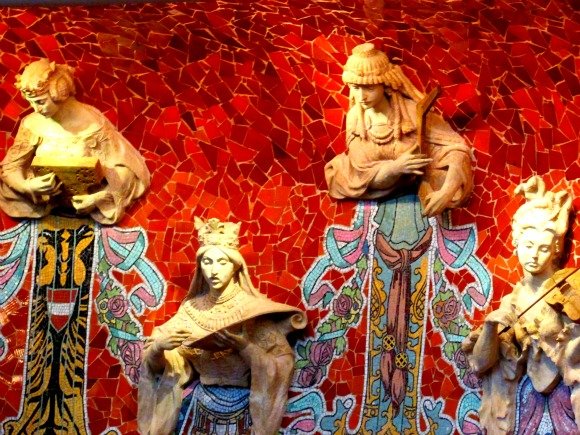
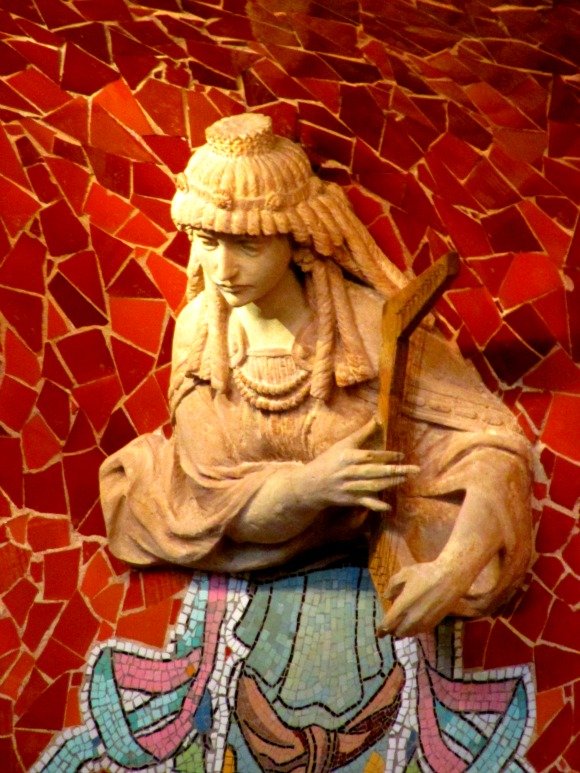
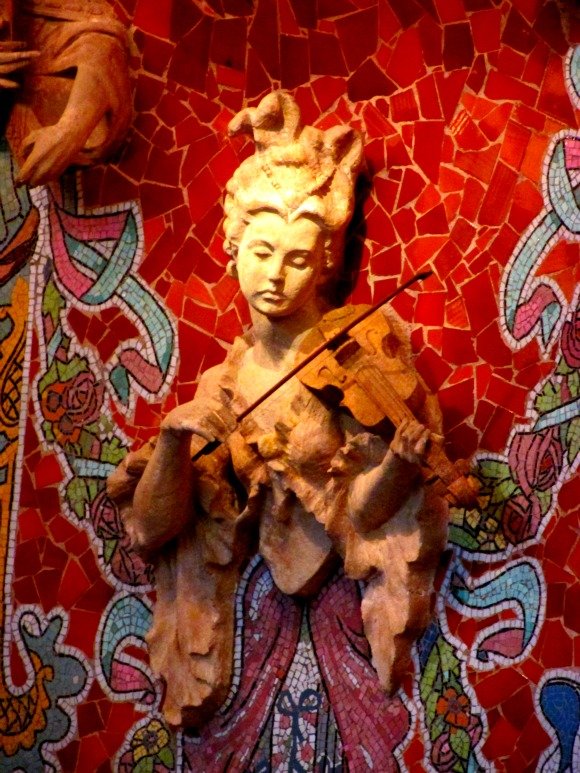

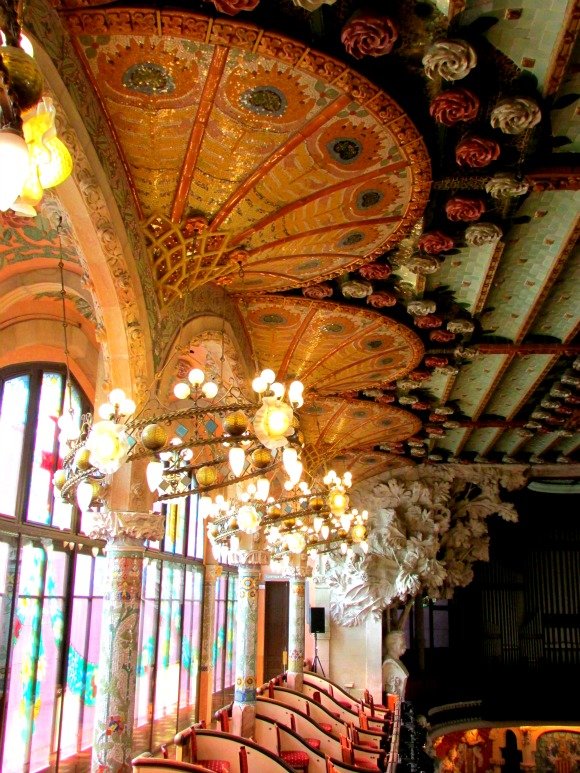


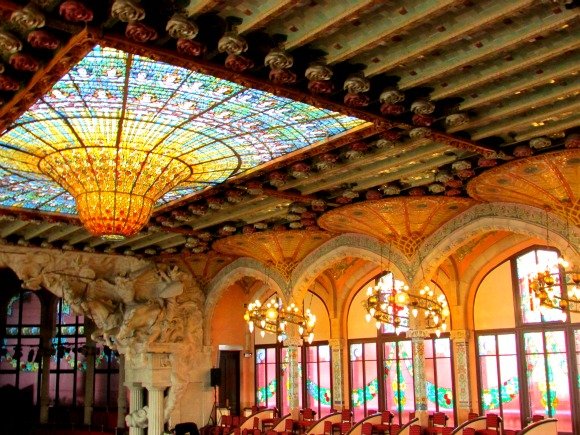

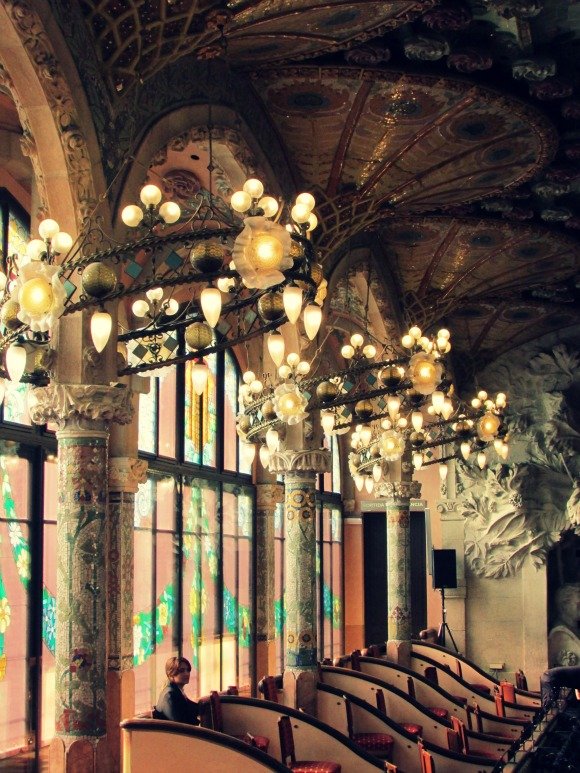
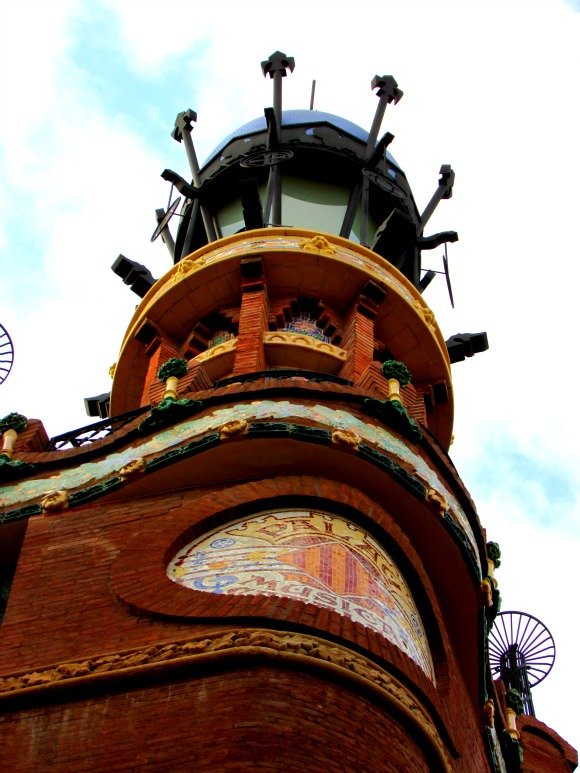
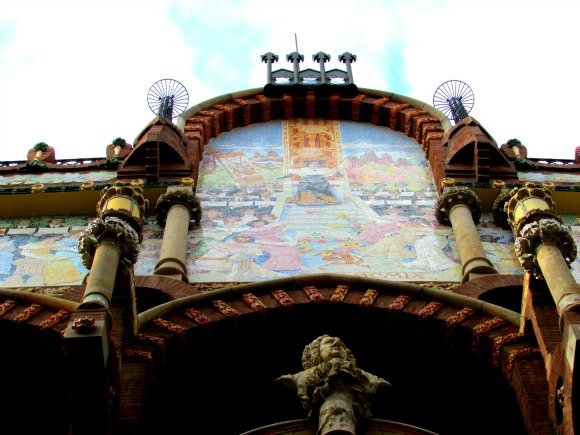
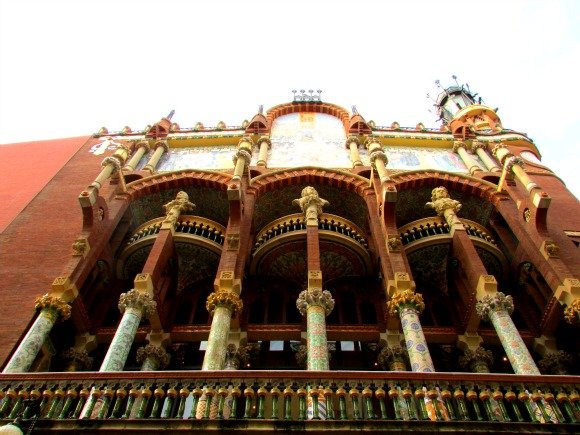
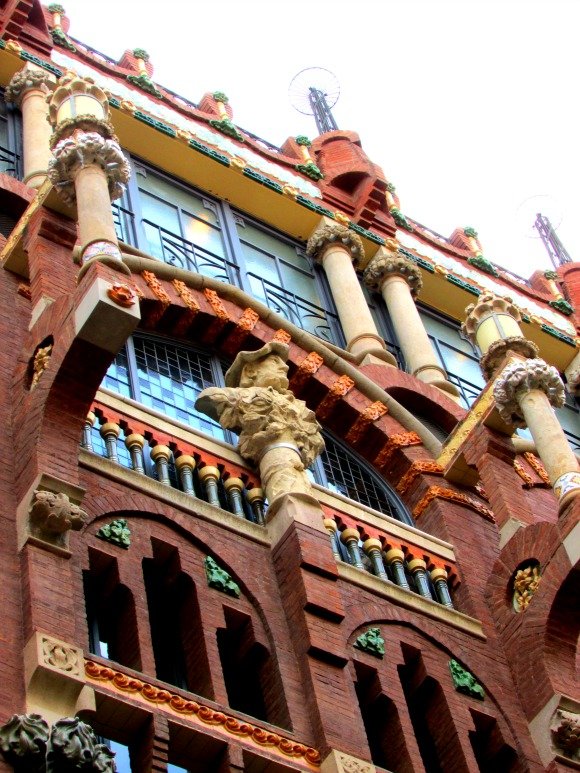

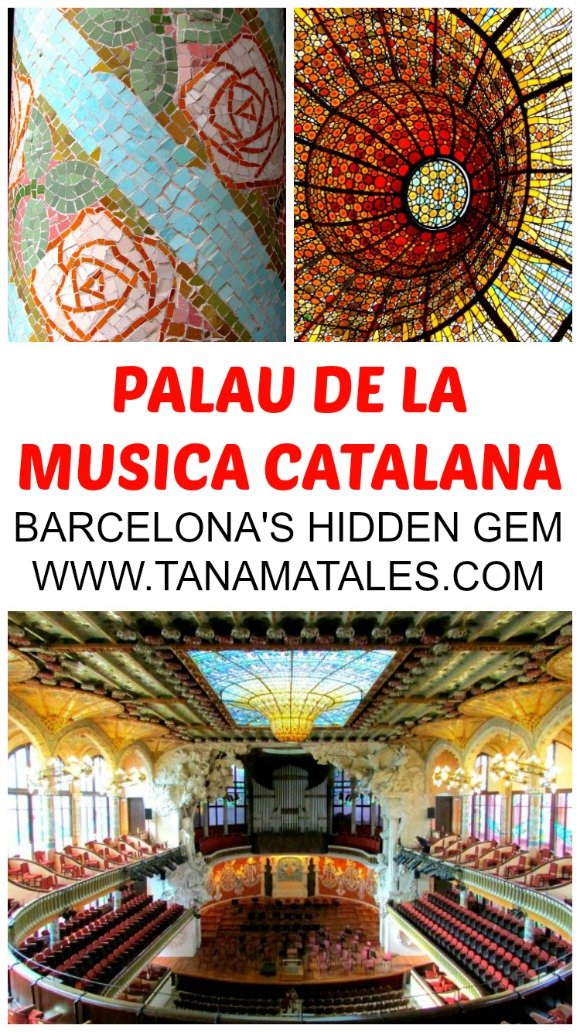
Comments
Post a Comment